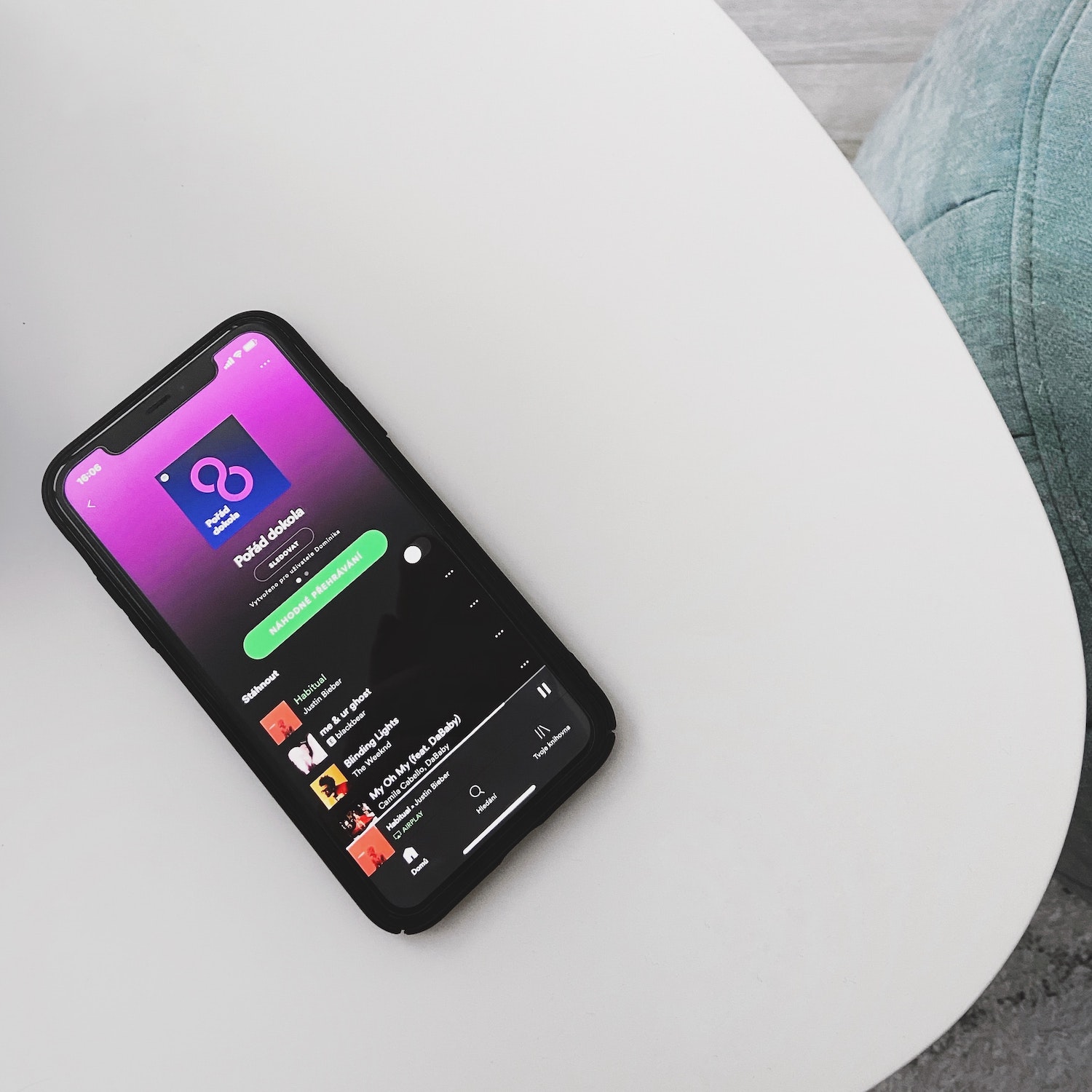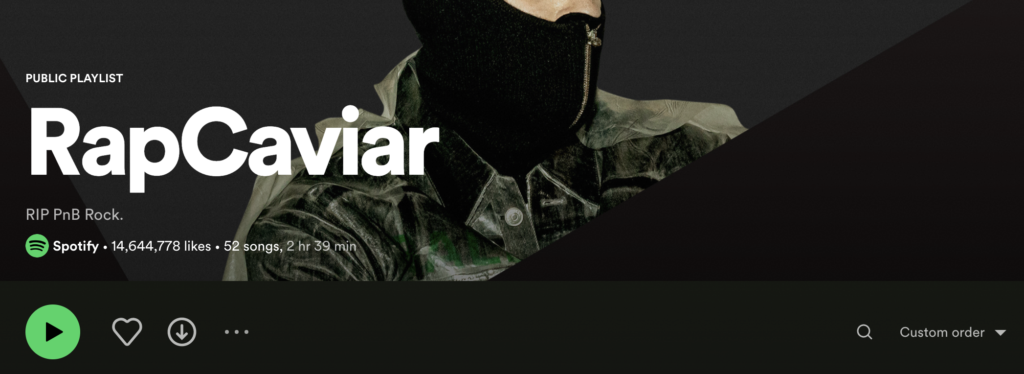There are more than four billion playlists on Spotify – from those made by Spotify’s editorial team to playlists created by users like you and me.
That’s mind-boggling, right?
Spotify has made the most of music playlists, allowing all users, no matter how many followers they have, to create their playlists and make them public (unlike its main competitors, Apple Music and Amazon Music).
Today I’ll look into the different types of playlists available on Spotify. If you’re a musician or producer, understanding the difference between each playlist will help you skyrocket your music career by focusing your attention on what matters the most: getting your music heard by the right people.
Let’s dive in!
Types of playlists
Spotify classifies the playlists depending on who makes them or listens to them. There are six different types, each with its own characteristics.
- Editorial playlists
- Algorithmic playlists
- User-created playlists
- Playlists that you make
- Branded playlists
- Collaborative playlists
We’ll tackle each type below.
Editorial playlists
These playlists are the ones that artists are interested in the most, as they allow music fans to find brand new music.
Curators who work for Spotify create these playlists, and it’s generally hard for an independent artist to get on them unless they already have a significant amount of followers. As you get more streams, your chances of being added to these playlists also increase.
When choosing songs for these playlists, the curators look at the following:
- How many people on Spotify follow you?
- Is there a lot of fuzz about your single, album, or artist page?
- Do tastemakers and other people who make playlists know about you and have already put you on their playlists before?
Although these are some things playlist curators look at, let’s be honest: it’s easier to end up in a playlist if you are already known or have a record label supporting your marketing efforts.
Nevertheless, you still have a chance of getting into one of them, so don’t give up right away!
Start by using the Spotify For Artist dashboard to notify the editors about the upcoming song. Ideally, you should pitch your track at least a week before releasing your music, but the earlier, the better. In order to get results, you need consistency, patience, and a loyal fanbase that will help you gain momentum when you release new music.
Algorithmic playlists
Algorithmic Spotify playlists are personalized collections, meaning we all get different playlists based on our listening habits. The system creates customized private playlists based on unique listening preferences for each user, using parameters like save rate, replay value, like rate, and share rate to determine what music is best for its users. This curation method implies that a song can simultaneously be on millions of Spotify users’ playlists as long as those people continue to listen to it. While algorithmic playlists frequently feature music for more extended periods of time, editorial playlists change weekly or monthly.
Discover Weekly and Release Radar are perhaps the most important algorithmic playlists. Both playlists are essential to your success on Spotify because users use them frequently to discover new music based on their taste.
The Release Radar playlist is sent to Spotify users every Friday. So, if someone has been listening to your music over and over again lately, you can bet that Spotify will add one of your songs to their playlist. If people follow you on Spotify, your music will appear on Release Radar.
Discover Weekly, on the other hand, is a bit different. After a user has used the Spotify app for a few weeks, an algorithm creates a Discover Weekly playlist for them. This playlist is updated every Monday with music recommendations based on the listener’s habits. There are 30 songs on the playlist.
Even though the playlist is personalized, like other algorithmic playlists, it also takes into account what other users who like the same genres or artists are listening to.
How do you use Discover Weekly?
Three things affect the Discover Weekly algorithm: collaborative filtering, natural language processing, and raw audio track analysis. These three components determine which songs appear on the playlists as well as which ones stay there for a long time.
1. Collaborative filtering
Collaborative filtering means that the algorithm can look at how users interact with songs using a wide array of user stats from 356 million users and its 70 million track archive. The statistics used to determine the filters are the number of saves to listeners, the number of skips, the number of shares, the number of likes, and how many times a song was played.
One of the most important factors that can help your song get on several playlists in the first week after it comes out is how many people save it. When you run a pre-save campaign, your song gets the boost it needs to get the algorithm’s attention.
2. Natural language processing
The NLP models crawl the web and look at texts to find out what people are saying about you or your new release online. Using social media and blogs to spread the word about your project is essential.
3. Analysis of the Raw Audio Track
The Discover Weekly algorithm wants to get a feel for your music, just like tastemakers in the music business and human beings who put together playlists. The algorithm will listen to your music by analyzing the raw audio, determining its mood and atmosphere and categorizing it accordingly.
Daily Mix
The Daily Mix is made up of music from six other playlists. This collection has songs from the On Repeat and Repeat Rewind playlists, as well as tracks from the genres you listen to. The mood of the listener affects the Daily Mix playlists. So that the music doesn’t stop, the playlist keeps suggesting more and more music to the listener as they go through the tracklist.
How do you use Daily Mix?
Daily Mix is not a playlist that people go to when they want to hear new music since it mostly features their favourite tracks. Your fans’ Daily Mixes on Spotify will include your music.
On Repeat and Repeat Rewind
Here’s a playlist for listeners who are not interested in discovering new music and those who prefer to enjoy their all-time favorite songs.
Because all these playlists are made automatically by an algorithm, if you’re on these playlists, you’re doing the right things to get people to listen to you and your music regularly.
How do you define good metrics?
When you’re just starting, a Save Rate of 40% or more, a Listen Rate of 1.8 or more, and a good number of total streams for your song (400+) will likely trigger the algorithm.
If you see these numbers, keep a close eye on them next Friday. There’s a good chance you’ll trigger Spotify’s algorithm and end up on the Release Radar playlists of people who don’t follow your profile.
User-created playlists
As the title says, these are playlists created by listeners. These playlists can be set to “Public,” meaning that other users can follow them and appear in Spotify search results.
There’s some controversy around these; they’re the playlists that Spotify promotion companies will put your music on. Personally, I think they can yield results (I’ve seen it firsthand), but I also acknowledge they can be risky, too. The trick is to vet user-created playlists to make sure you get on one that’s legit. From there, find the person who made or is in charge of the playlist and ask them to include your music. I recommend that you don’t ignore smaller playlists: if the owner of the playlist has good taste, they can get more followers and grow in no time.
Playlists that you make
This feature on Spotify is something you should definitely use. It’s like skipping the middleman and making your platform to showcase your music to an interested audience.
You can create a playlist focused on helping you get to the people you want to reach. If you invest some time in it, you might end up with the perfect echo chamber for your music.
Let me explain. You can reach out to 100 playlists and maybe get a couple of placements, which is excellent, and your efforts may give you a little boost. But what will happen if that playlist decides to take you off their list after a month?
When you make your playlists, you’re in charge, and the success of that playlist depends on how hard you work to get it where you want it to go. These playlists can become a marketing tool for your songs and albums, so you should treat them like assets that will help you boost your career.
Create your own playlist with songs that are similar to the music you make, and work hard to get more people to listen to it. From there, you can add your songs in a natural way, and Voilà, You got your music in a successful playlist!
Branded Playlists
Branded Playlists are external playlists not created by Spotify but by prominent organizations like recognized blogs, record labels, music magazines, managers, agents, and so on. These playlists are increasingly replacing radio stations in some ways.
Since these organizations are all about leverage and how they can improve their image, it will be more difficult for your music to be considered unless you have a large fan base or a very efficient marketing department supporting you.
On the upside, some of these playlist editors want to be recognized as tastemakers, which implies that they have an eye out for music that is rising in popularity. These types of playlists will be more open to hearing from musicians who may not be established yet.
I would advise focusing on playlists that are new or gaining popularity.
Collaborative playlists
These playlists allow multiple people to add music to them. It’s a fantastic way to create a little community and get your songs on a list that other people can see.
You can do this by getting together with some friends or other musicians you know and making a playlist together. You can also go further and do this with collaborative albums, creating a playlist of songs you made with someone else and that you can promote together.
Final thoughts on Spotify playlists
Ultimately, you should focus on strategies that give you the most control over your music. I would definitely focus on creating my own playlists and investing time in making them grow. Still, it’s a good idea to work hard to find possible playlists where you can add your music and get more people to follow you and enjoy your music.
Don’t give up, and keep looking for the best playlists that can help you promote your music.
Good luck!











